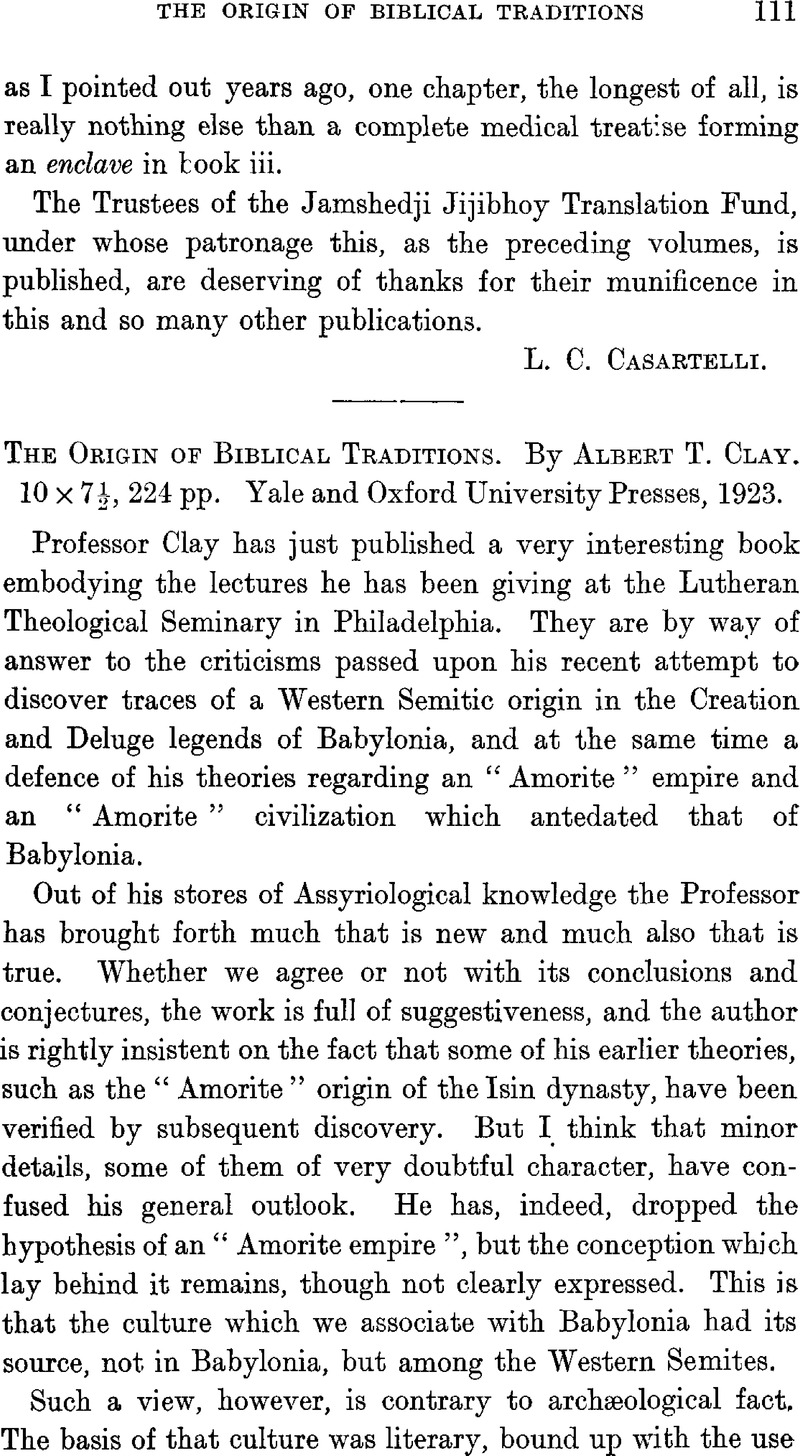No CrossRef data available.
Published online by Cambridge University Press: 15 March 2011

1 That khubur in the Creation story is West Semitic must be admitted, but it proves the West Semitic origin of the story no more than the use of the cognate khabiri “ confederates ” in K 890 (first published by Brunnow) proves the West Semitic origin of the Assyrian hymn in which it occurs.
2 I can, however, furnish grist for the Professor's mill. According to an early geographical list (KTAVI. 183. 12, 25) Surippak, the city of Ziûsuddu, the Chaldæan Noah, was in the land of the Shuhites (Sukhi) on the Euphrates and not far from Hit. The treatise De Dea Syria tells us that at Membij the chasm was shown into which the waters of the Flood were drained, and the local hero of the Deluge bore the name of Sisythes, i.e. Ziûsuddu.